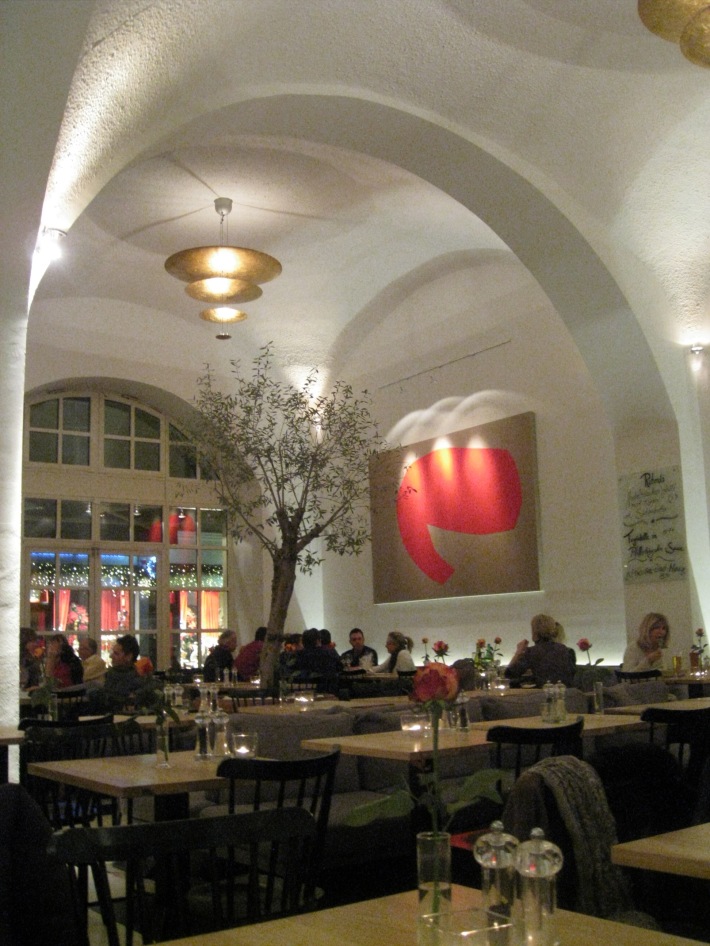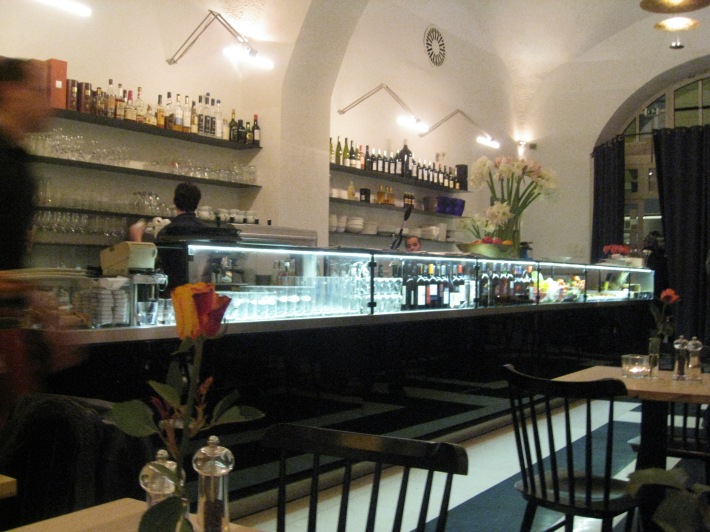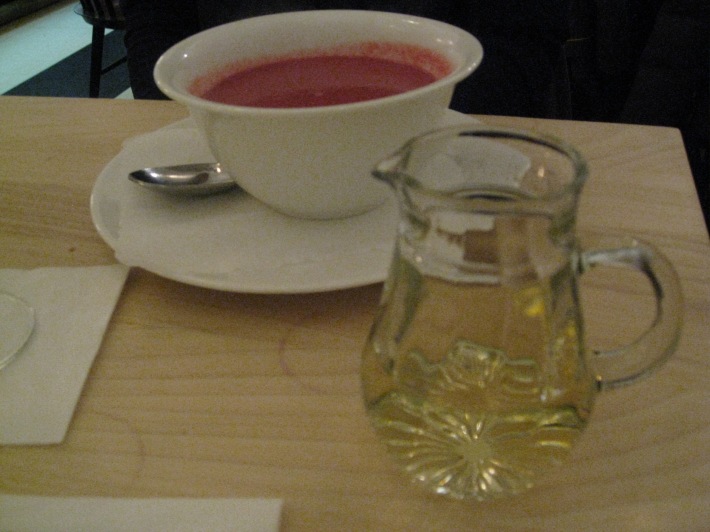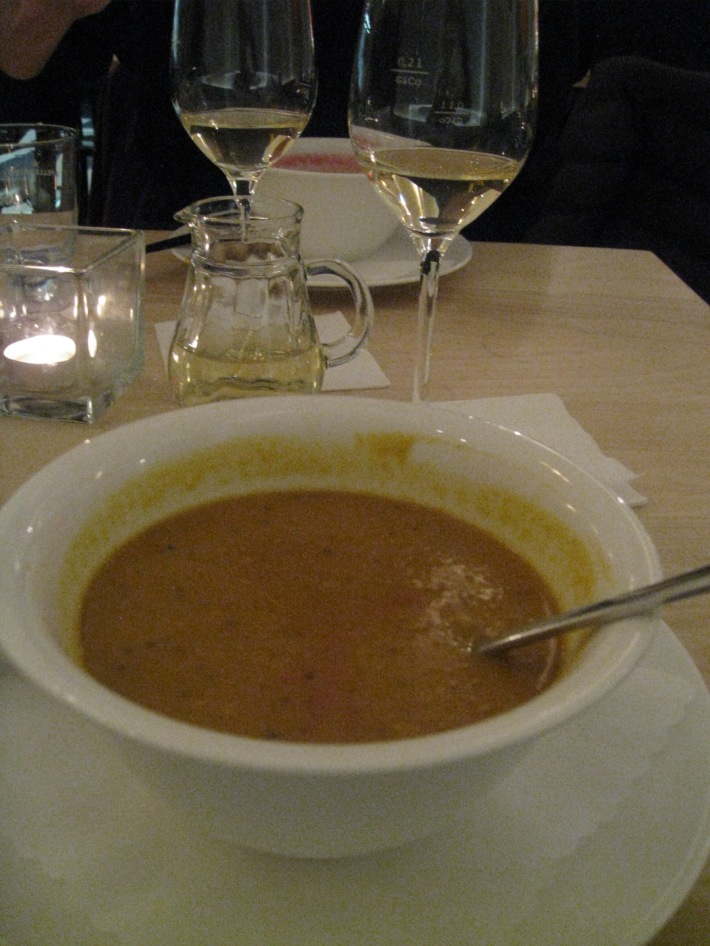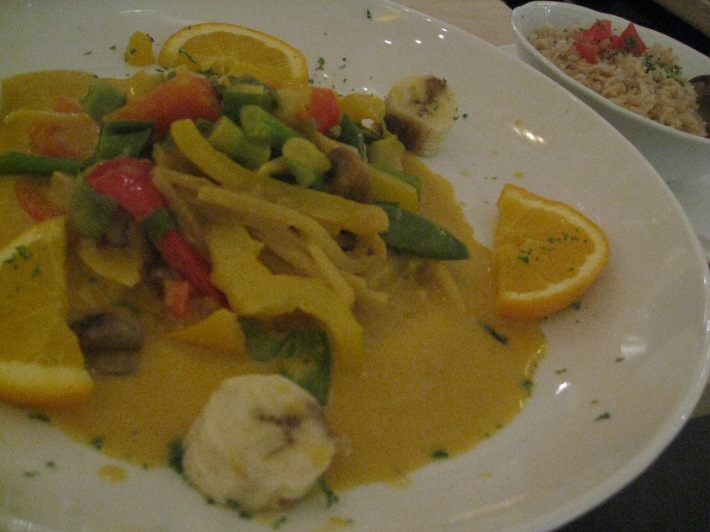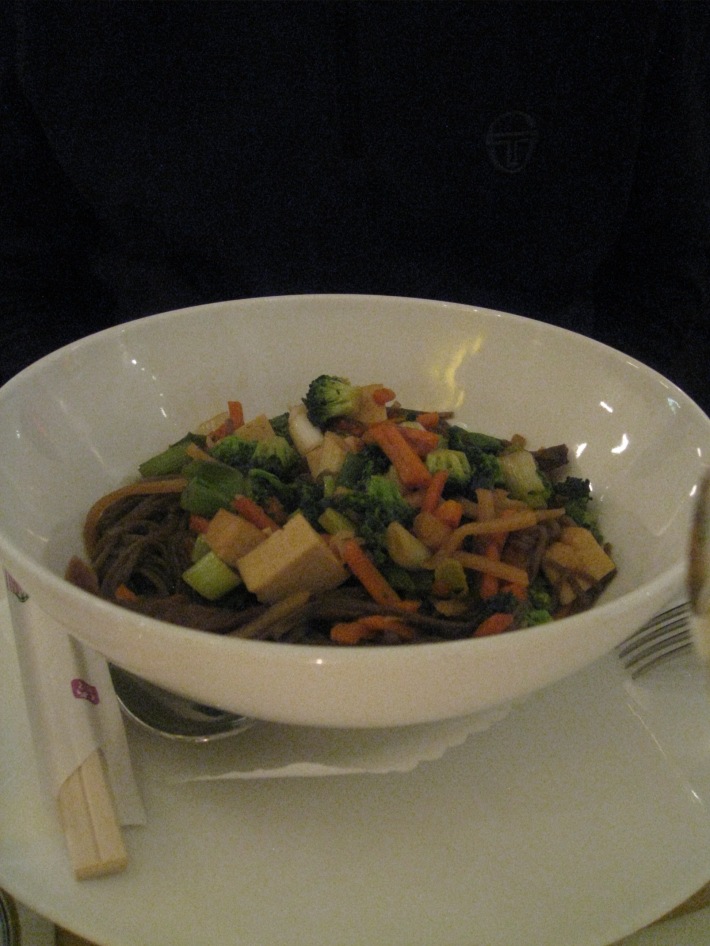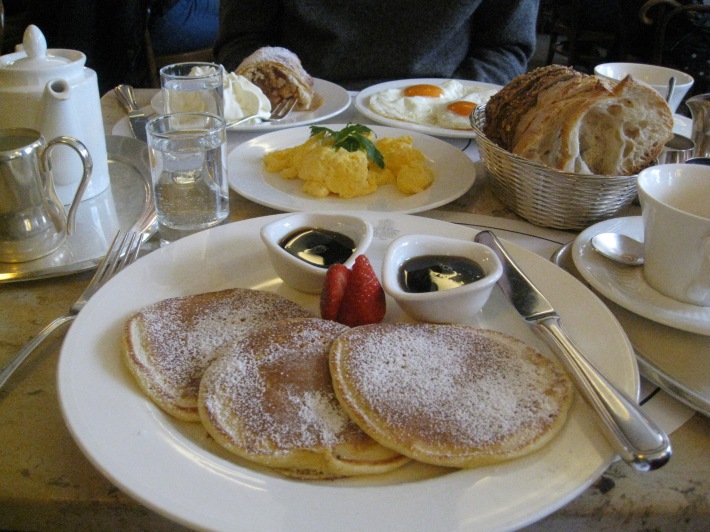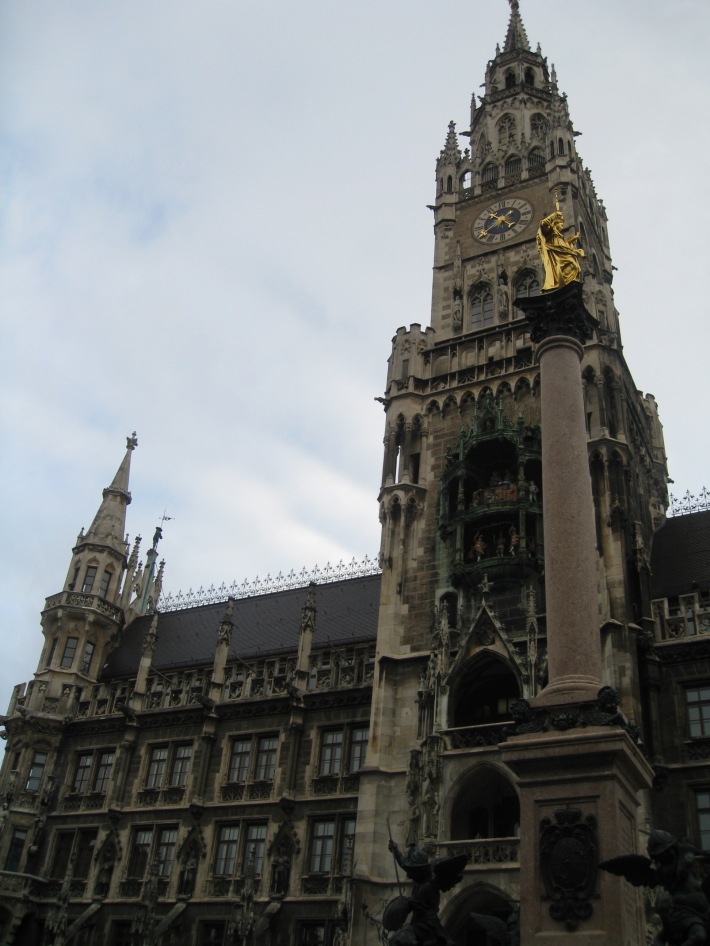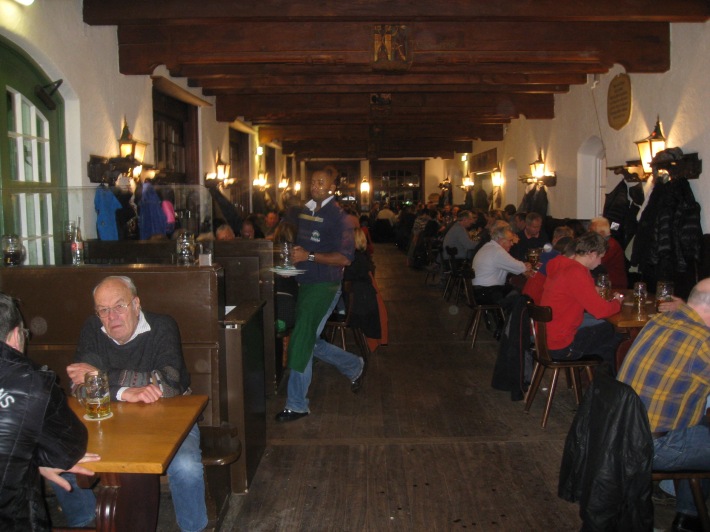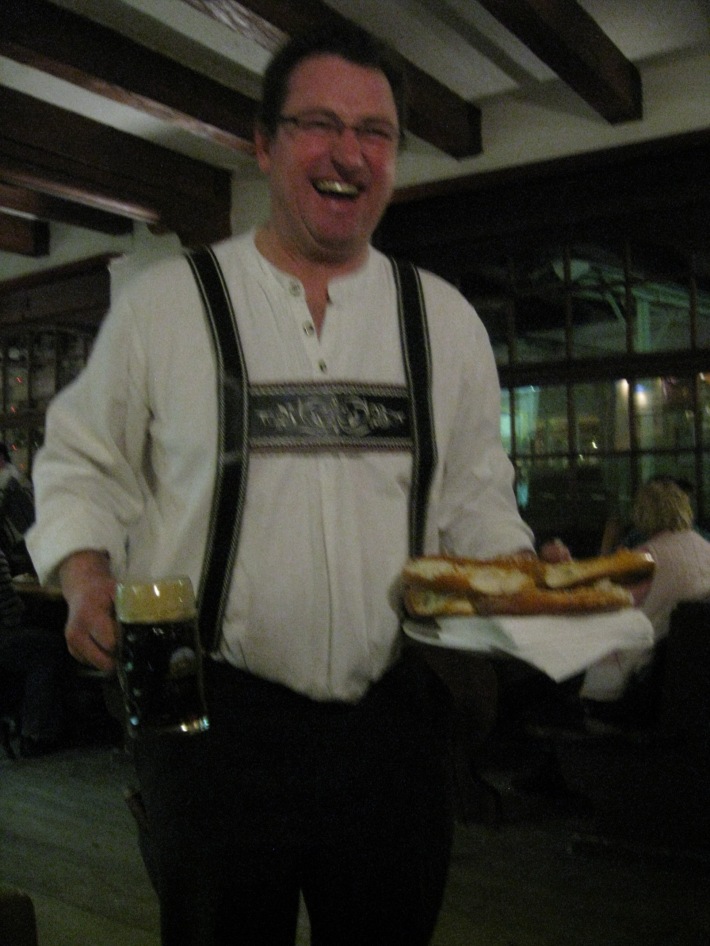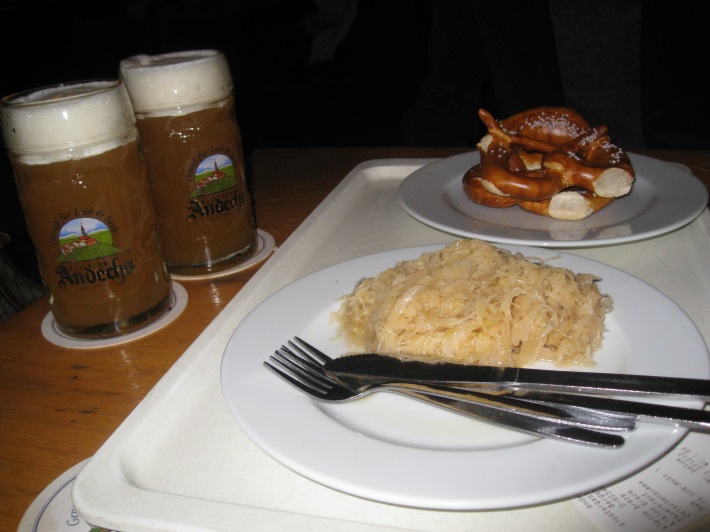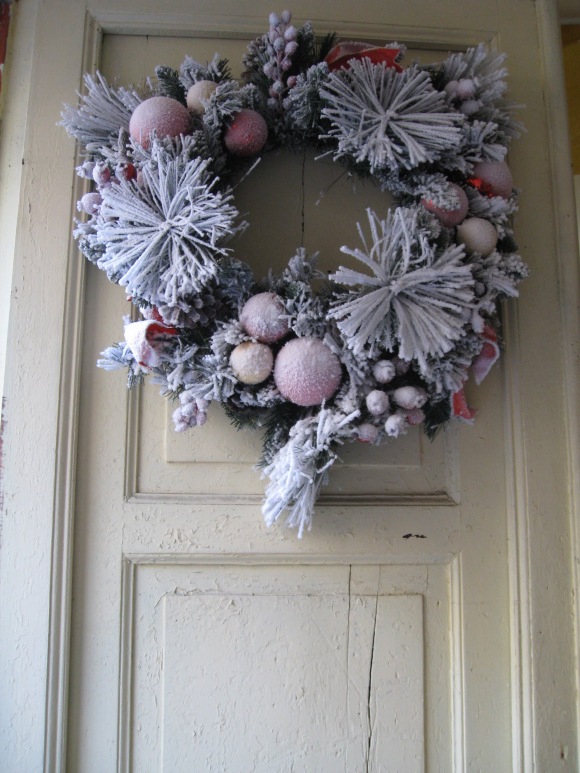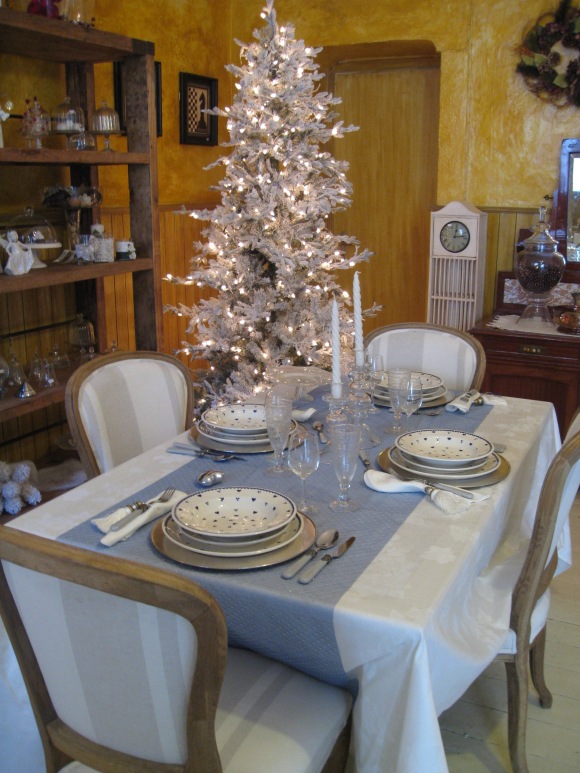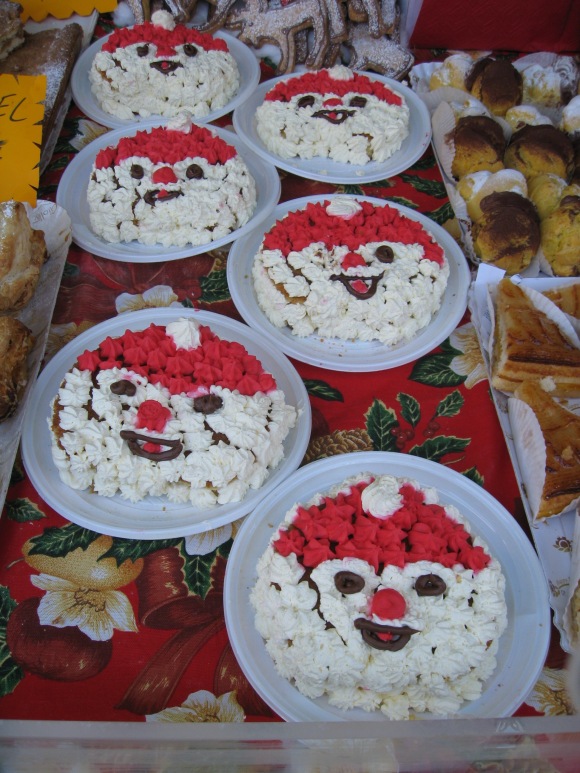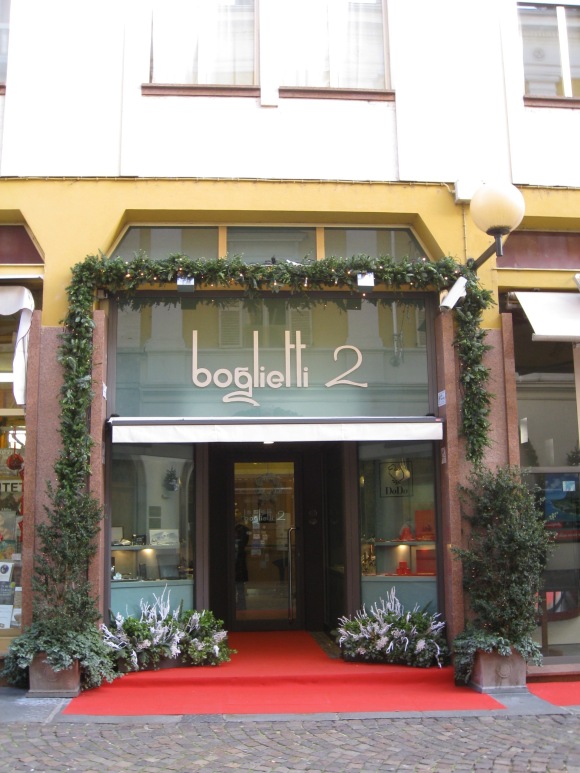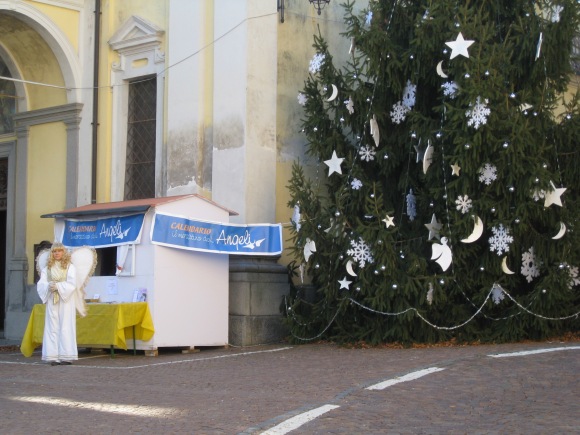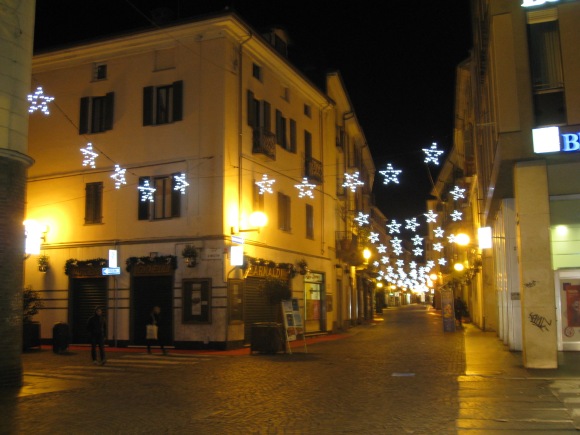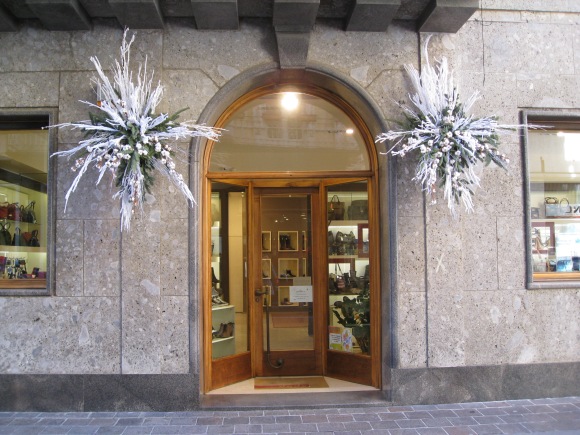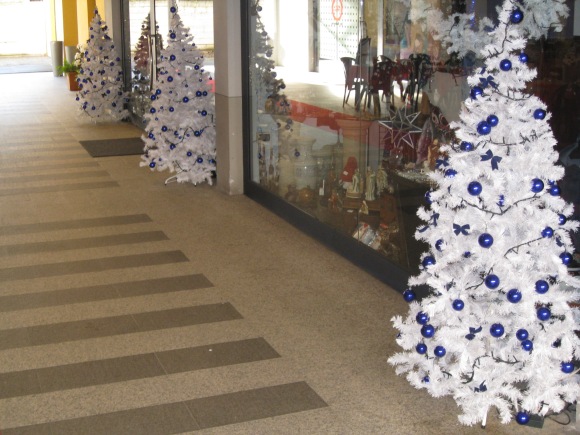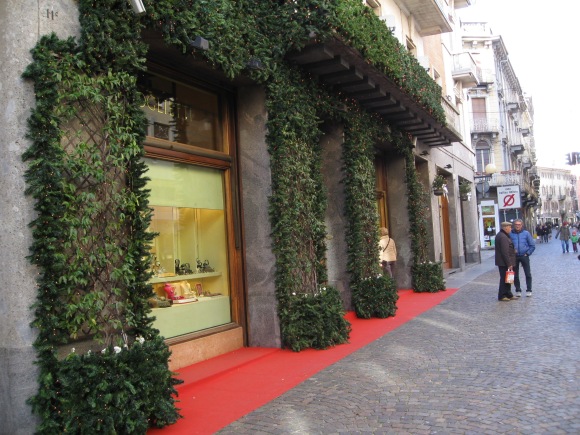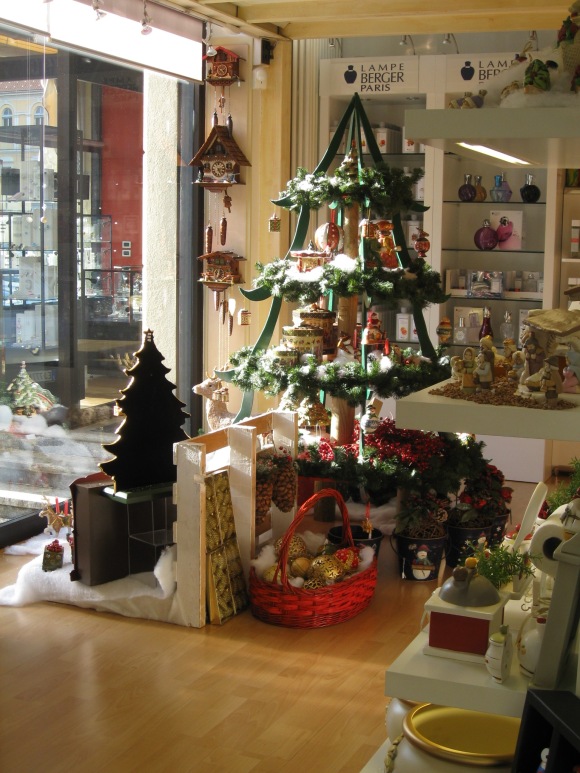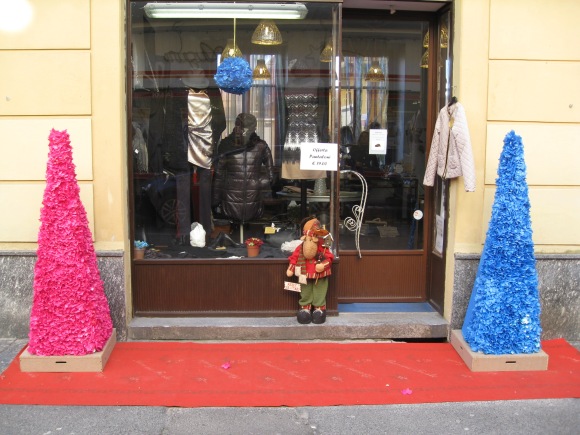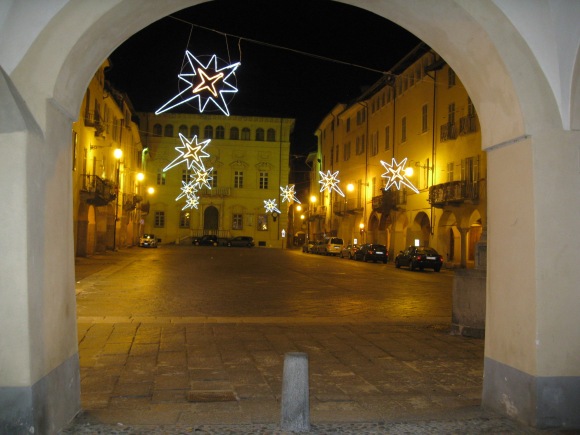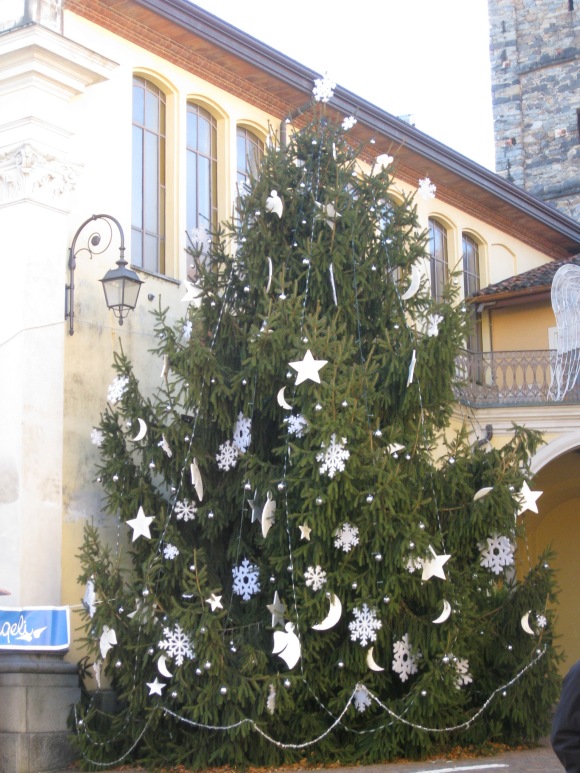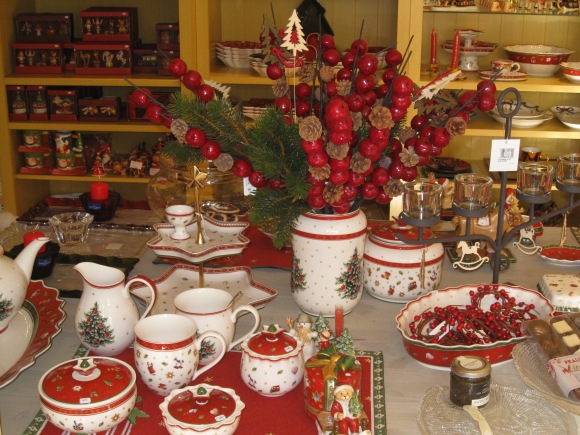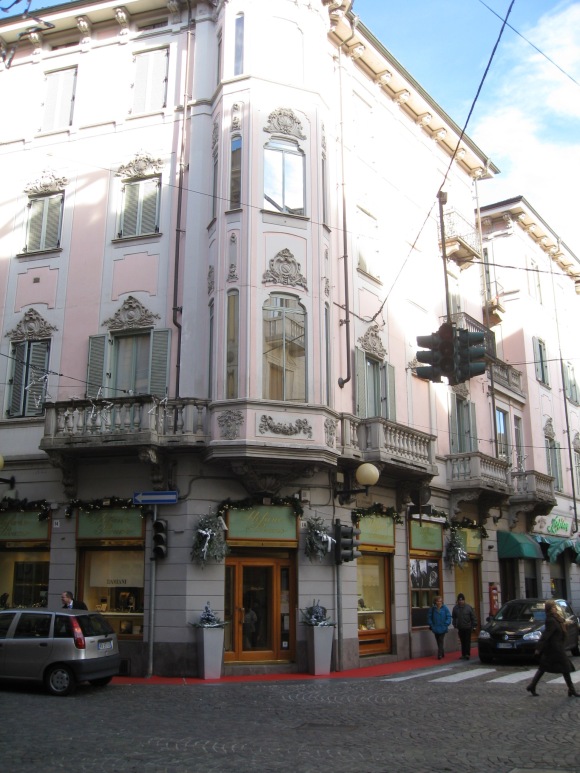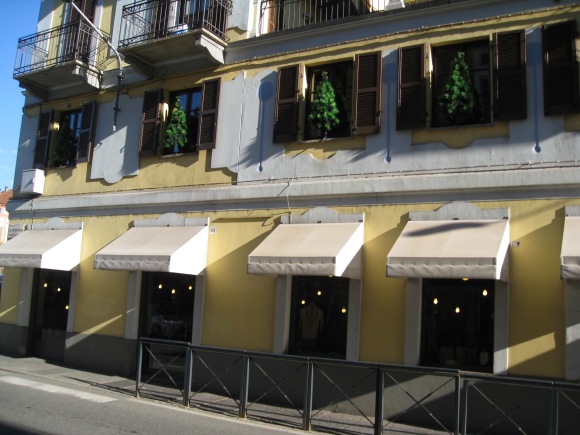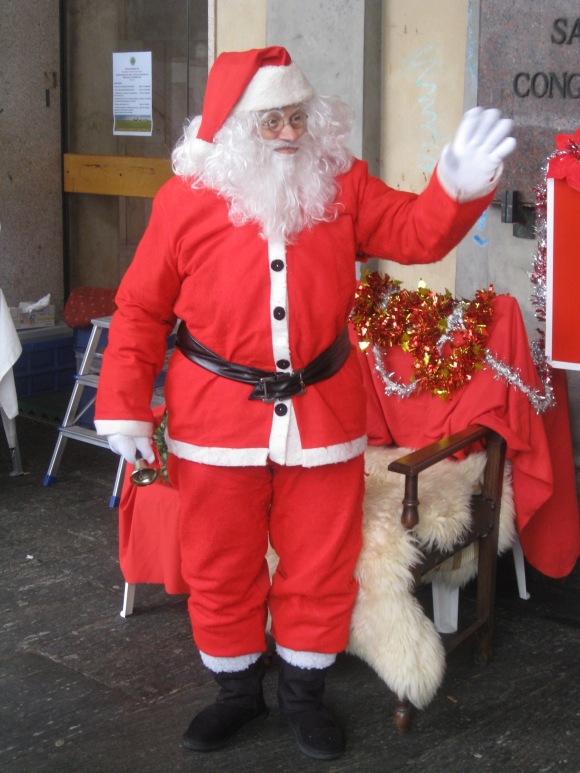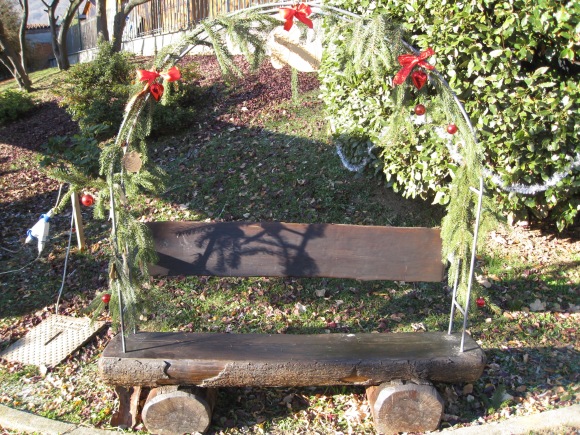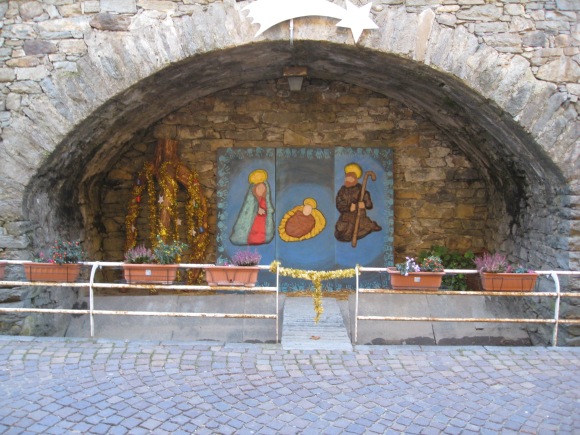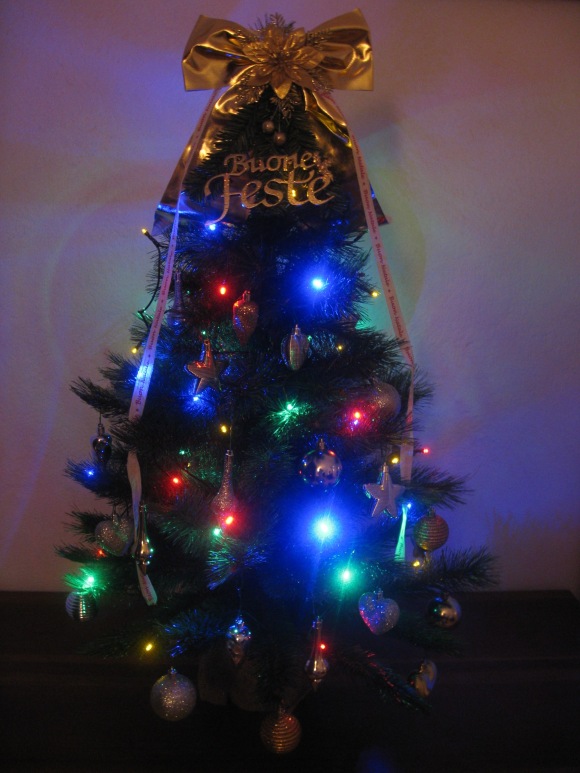We arrived in Munich in the early evening, so our first stop was dinner at Prinz Myshkin, considered by many to be the best vegetarian restaurant in Munich.
The restaurant and bar were bright, airy, and just trendy enough.
G began with a vibrantly colored beetroot concoction.
I chose a gastro-pleasing Indian curry stew.
Followed by a Thai curry and couscous.
And a vegetable stir-fry with tofu. The food was wonderful and a welcome reprieve from our usual Italian fare.
The next morning, Munich greeted us with gray skies and a persistent drizzle. So, we decided to counteract the day’s dreariness with an extra special breakfast at Dallmayr.
As you can see from the photo above, we went a little overboard. Easy to do at a place as special as Dallmayr where the food is perfection, the service and presentation are a dream, and the coffee is the best I’ve ever had.
Once sufficiently fortified – thanks to Dallmayr – we ventured out to the Marienplatz (St. Mary’s Square) to view the New Town Hall above and observe the famous Glockenspiel strike the hour. Upon striking, the figures emerge to reenact the Schäfferltanz, a dance first performed in 1517 to mark the end of the plague.
In case you’re wondering, that’s the column of St. Mary in front of the New Town Hall. The column commemorates the end of Swedish invasion and is topped by a gilded statue of the Virgin Mary.
After a long day of sightseeing – some of it emotionally taxing (stay tuned) – we left Munich and headed out to Andechs where we drove up a dark hill to reach the monastery at the top.
At first, we thought we’d made a mistake. The place was dark and deserted. We walked down a dark alley into an unmarked building, went up the stairs and were confronted by this: long wooden tables filled with people, beer and pork in Renaissance fair style cuts and sizes!
Absolutely no on spoke English at this place, but we managed to mime and point an order to our jovial server.
This is probably the best thing I ate in Munich. Not because it was so much better than anything else I ate. (It’d be pretty hard to beat Dallmayr.) But because it was exactly what I wanted: a huge beer, a soft pretzel, some sauerkraut, lots of “atmosphere,” and the joyous sound of laughter and glasses clinking everywhere – perfection!
Arrivederci!
